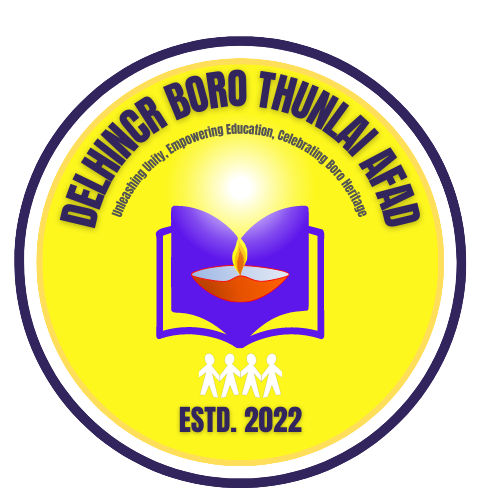The Unveiling the Rich Tapestry of Assam: Exploring the Bodo Community
Located in the northeastern part of India, the state of Assam is surrounded by the great Himalayan region in the north, Bay of Bengal in the west and the states such as Arunachal Pradesh, Meghalaya, Manipur, Nagaland, etc. as its neighbours. The state is known for its multicultural and multilingual diversity, nestled in the middle of lush greenery and rivers. Among the various ethnic groups residing in Assam, the Bodo community is one of the many culturally rich communities and as the largest plains tribes of Assam, the community has made a mark for itself as a progressive and forward looking group of people.
The roots of the Bodo community can be traced back to ancient times. The term "Bodo" is believed to have originated from the word "Bod" which means Tibet. Historically, the Bodos inhabited different parts of the eastern region of India that includes present-day Assam, Arunachal Pradesh, Tripura and parts of West Bengal as well as some of the neighbouring countries - Bangladesh, Nepal and Bhutan. Hailing from Tibeto-Burman linguistic family, over the centuries, the Bodos have maintained a distinctive cultural identity, despite the strong current of socio-political changes and cultural influences. Though much of the writings on this erstwhile ruling clan as a branch of Kachari tribe came from British officials ethnographers, mention of the Bodo as Mlechh, kirata, etc. is found in ancient texts, indicating that the Bodo people have lived over their habitat as earliest settlers, practiced agriculture and farming, worshipped nature through Bathou tradition and developed a distinct culture of its own.
One of the defining features of the Bodo community is its unique language structure, also called Bodo. Classified as a Tibeto-Burman branch of Sino-Tibetan language, Bodo is spoken by millions in Assam and it was the first tribal language to be included in the Eighth Schedule of Indian Constitution in 2003. As per the new Accord of 2020 for the creation of Bodoland Territorial Region, Bodo language has been accorded an associate Official Language status of Assam which promises to establish a separate directorate for Bodo medium schools, provincial schools and colleges in the Bodoland Territorial Autonomous District areas. This is significant as language plays a crucial role in preserving cultural heritage and serving as a link between generations.
The Bodo community boasts a rich tapestry of traditions, festivals, and rituals. The Bwisagu festival, for instance, is a joyous celebration marking the Bodo New Year in the lunar month of Baisakh. Characterized by traditional dance, music and feasting, this festival showcases the vibrant cultural expressions of the Bodo people. The Bodos also have a rich tradition of folk music and dance, with instruments like the kham (drum), siphung (flute), khawang (double bells) and serja (stringed instrument) adding melodious layers to their cultural repertoire. Many of the performing artforms like kherai dance together with associated musical renditions have their spiritual origin and represent the world view of the Bodo people.
Bodo women are known for their weaving skill across the land of Assam. Traditional Bodo attire reflects the community's connection to nature and its agrarian roots. The age old tradition of weaving is transmitted through generations in the familial environment of Bodo villages, surrounded by nature. Bodo women continue to adorn colourful dokhna (wraparounds) and jwmgra (chador), that were originally made of natural fibre, cotton and endi silk. All clothing items were produced in-house by each family and knowledge of weaving was indispensable to community identity. The attire not only showcases the Bodo aesthetic but also underlines the importance of traditional craftsmanship and textiles in their culture.
The Bodo people traditionally practiced agriculture, with paddy cultivation being a significant part of their livelihood. It is around such livelihood activities like rice farming, fishing, foraging in nature that a strong sense of belonging to the community developed over the centuries. Bodo people never had to face shortage of food due to the traditional subsistence practices. However, modernization and socio-economic changes with commercialization have led to a diversification of occupations within the community. Many Bodos are now engaged in non-farming occupations such as education, government services and entrepreneurship while still maintaining a deep connection to their cultural roots.
Like many indigenous communities, the Bodo people have faced challenges over the years, including issues related to land rights, social marginality, cultural preservation and political under-representation. However, the community has demonstrated resilience in the face of adversity, actively participating in the socio-political landscape to protect and promote their rights.
The Bodo community of Assam is a living testament to the rich cultural diversity that defines the northeastern region of India. With a deep connection to their history, language, and traditions, the Bodos continue to contribute to the cultural vibrancy of Assam while navigating the challenges of the modern world. Exploring the multifaceted aspects of the Bodo community offers a glimpse into the intricate mosaic that is Assam, a land where tradition and modernity coexist harmoniously.
